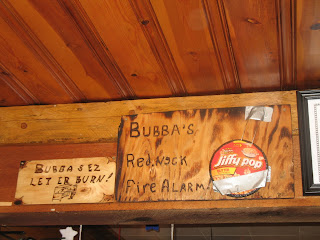Our revised itinerary took us from northernmost Utah almost due south to Arizona. The state of Utah is beautiful and so diverse in terms of the geology/geography. The Johnny Cash line in the title is a little misleading, as we encountered the mountains FIRST as we were driving south and ended in the desert.
Our first stop of interest the morning of our Utah traverse was the Great Salt Lake. Below is a satellite image of the lake, it's huge! The size makes it almost impossible to get a good view of it from the ground. The lake is the largest U.S. lake west of the Mississippi River. It is a remnant of Pleistocene-age Lake Bonneville, which was about ten times larger than the current size of the Great Salt Lake. At ~75 miles long and 25 miles wide, it's the 4th largest lake without an outlet in the world! It is only about 35 feet deep though, making it comparable in depth to the Chesapeake Bay. It is about 3-5 times saltier than the ocean and has no fish. Source: USGS Water Science Center.

One of the places recommended for viewing the lake was Ensign Park, a park in Salt Lake City, that is perched on top of a hill, ideally to get better viewing. What the website didn't say was that this park is a site of historical/religious significance for Mormons, so we were in the religious minority at the top. Oh, and did I mention this was the day of the rapture? So everyone else there had hymnals and were singing and praying and having picnics. We were just trying to get a view of the lake! This is me at the top of Ensign Peak with the lake in the background. Note how the water embays the ridges - the large Pleistocene lakes that formed in this area formed by rainfall filling up the low-lying areas (basins) between the high ridges (ranges) of the Basin and Range province that extends through most of the southwest and into Mexico. More on Basin and Range paleolakes in the posts about my trip to the Quinn River!

Salt Lake City seems like a nice place - it looked clean and not too built up. I've been told it's one of the prettiest airports in the U.S. to fly into, which I would believe considering the lake and snow-capped peaks all around! The picture below is from Ensign Peak, looking down on the Utah state capitol building.

After leaving Salt Lake City, we traveled a short distance south to visit the Bingham Canyon Copper Mine, the largest open-pit mine in the world! This is a picture taken from the interstate - the brown mounds are the sides of the mine - look how tall it is compared to the mountains!

This is a view down into the mine from the visitors' parking lot:

The visitors' center was really informative - there was a lot of historical stuff about the mine, a good display on how copper goes from copper ore to thick sheets of pure copper (the stuff that gets sold!), copper-bearing mineral samples, and displays of everyday, household objects that contain copper. There were also some pretty pieces of art made from copper and other metals. Megan and I both took a picture of this piece, so it must have been pretty good!

From the mine, we drove south toward Moab, and Arches National Park. As we drove, we saw some exposures of the Book Cliffs. These rocks are so named because they look like the side view of a book that has been opened and laid down on its cover. The layers of sedimentary rock include sandstones, shales, and coal beds, and represent the sediments of the Great Cretaceous Seaway that filled the interior of North America. The Cliffs are where Exxon geologists developed the practice of sequence stratigraphy in the 1980's. This is a picture we took from the road:

It's easy to see why people name rocks things like "ship rock" out west. I had never seen landscapes like this in person until this trip. The land is so flat, and some of the rocks are so isolated and stick up so abruptly from the surroundings, that they really do look like ships on a dry sea.

We arrived at Arches National Park around dinner time, only to find that all the campgrounds were full. We spent the majority of the evening and night driving around looking for a place to camp. Every single campground was filled up. We ended up unofficially sharing a family's campsite around midnight. We only infringed for about 5 hours before taking option c - sneaking out in the middle of the night! Just like at the Happiness Hotel (reference: Great Muppet Caper)!!!! That was probably our roughest night - most people didn't even pitch tents, they just slept in their sleeping bags on a tarp on the ground.
My real work is calling...unfortunately. Next post: Arches and Canyonlands!
Happy trails!
Sarah





























